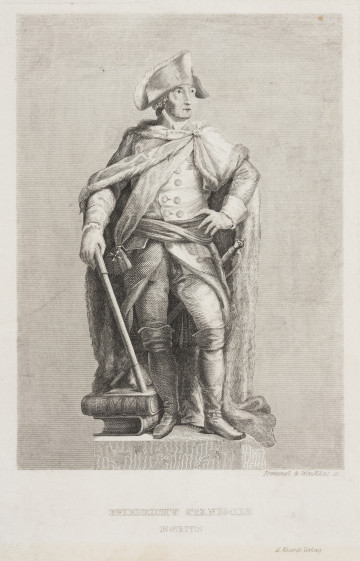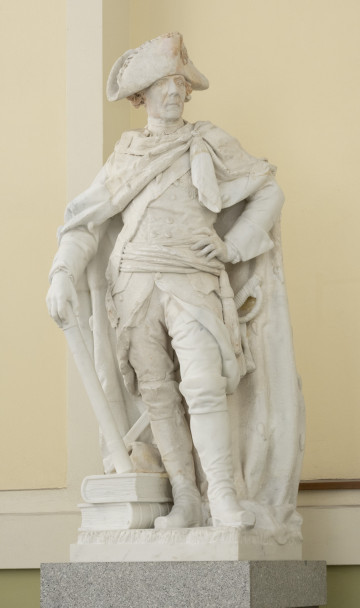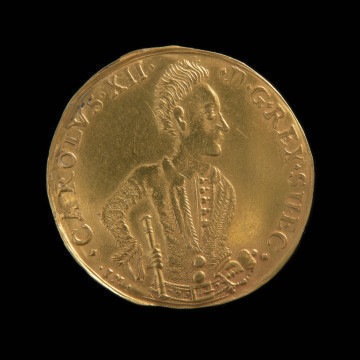
Friedrich's Standbild in Stettin | Statue of Frederick the Great in Szczecin
około 1840
National Museum in Szczecin
Part of the collection: Craft and industry products of Szczecin
By the Peace of Stockholm (1720), Szczecin and part of Pomerania officially became part of Prussia, becoming the capital of the Pomeranian Province. The Prussian ruler at the time was Frederick II the Great (1712-1786) of the Hohenzollern dynasty. The monarch became known as a skilled military strategist, reformer of the judiciary, administration, and education, but also as a philosopher ruler, writer, and patron of music. Throughout his rule, he adhered to the idea of enlightened absolutism, in which the monarch as the "first servant of the state" grants freedoms and privileges to the people while centralising power and expanding the state apparatus. During his reign, Prussia became a European power. In the Friedrich era, Szczecin transformed from a peripheral garrison site into a prominent urban centre reinforced by three powerful forts. Lushly ornamented baroque gates, impressive parade squares including the most representative square at Rynek Koński (now pl. Orła Białego), with magnificent edifices and the first city fountain, became a tangible sign of the new ruler's power. To commemorate the monarch and his merits, a monument to him was funded by the citizens of Pomerania. A statue over two metres tall was hewn in Carrara marble by Johann Gottfried Schadow (1764-1850), an eminent artist of the Classical period, known as the 'father of the Berlin school of sculpture'. The Szczecin monument, solemnly unveiled on 10 October 1793, was originally located at the White Parade Square (now Pl. Żołnierza Polskiego). After almost a century, however, it was moved to the interior of the nearby Palace of the Pomeranian Sejm (now the Museum of Regional Traditions) on account of the harmful effects of the weather. The mythologised figure of Frederick the Great soon inspired works of German art, and the best-known representations were reproduced in large numbers not only as simple prints, but also as elegant miniatures of monumental sculptures. One example of this trend is a 58-centimetre-high copy of the Frederick monument in Szczecin, dating back to the early 20th century, made by an unknown artist in alabaster. Although it is engraved with the letters W and Z, there is no certainty that these are the author's initials. Małgorzata Peszko
Author / creator
Technique
sculpture
Material
alabaster
Origin / acquisition method
purchase
Creation time / dating
Creation / finding place
Owner
Muzeum Narodowe w Szczecinie
Identification number
Location / status

około 1840
National Museum in Szczecin

1793
National Museum in Szczecin

1706
National Museum in Szczecin
DISCOVER this TOPIC
Museum of King Jan III's Palace at Wilanów
DISCOVER this PATH
Educational path